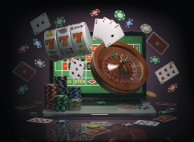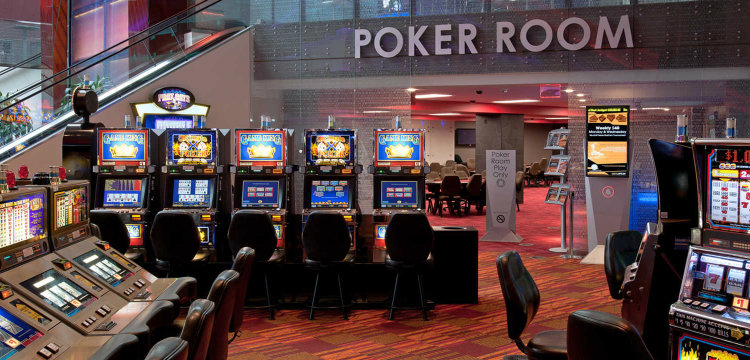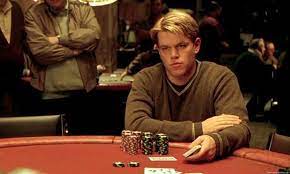
In the enthralling realm of poker, where the cadence of shuffling cards and the palpable tension of strategic moves converge, the game transcends mere competition; it becomes an art form. In this article, we delve into the intricate relationship between poker and artistry.
From the subtle nuances of poker room design to the psychological impact of carefully curated artwork on players, and the pervasive influence of pop culture on the game’s image, we explore the multifaceted intersection of strategy and aesthetics. Join us on a journey that unravels the captivating tapestry where the artful elements of poker not only shape the ambiance but also influence player psychology, ultimately weaving together the rich fabric of this timeless card game.
The Influence of Art on Poker Room Design: Creating the Perfect Ambience
The poker room design is not merely a utilitarian arrangement of tables and chairs; it is a carefully curated space that sets the stage for the profound interactions and strategic battles about to unfold. Art plays a pivotal role in shaping the ambiance of these rooms, creating an atmosphere that transcends the functional aspects of gameplay. First and foremost, lighting is an essential element, and artistic fixtures are strategically placed to illuminate the tables while maintaining an aura of sophistication. Warm, inviting hues are often chosen to cultivate a sense of comfort, encouraging players to settle into the rhythm of the game.
The choice of furniture, from the design of poker tables to the chairs, contributes to the overall aesthetic. Sleek and ergonomic tables not only enhance the visual appeal but also provide a functional surface for the intricate dance of cards. Comfortable seating is equally crucial, ensuring that players can maintain focus without the distraction of physical discomfort. Artistic elements, such as custom-designed poker chips and card decks, add a touch of luxury, elevating the overall visual experience.
Wall decor and murals are another facet of poker room design where art takes center stage. Iconic poker imagery or abstract representations of the game can be prominently displayed, serving as visual anchors that tie the room’s design to the essence of poker itself. This deliberate integration of art into the spatial design creates an environment that is not only conducive to gameplay but also resonates with the cultural and aesthetic nuances of the poker world.
Moreover, the layout of the poker room is carefully planned to maximize both functionality and visual impact. The positioning of tables, the flow of foot traffic, and the integration of amenities all contribute to creating a harmonious space. Artistic elements are seamlessly woven into this layout, ensuring that every corner of the room contributes to the overall aesthetic appeal.

The Role of Poker Artwork in Player Psychology: Enhancing Focus and Confidence
One crucial aspect is the use of motivational imagery. Art featuring iconic poker scenes or depictions of legendary players can serve as a source of inspiration for participants. These visuals, whether in the form of framed prints or wall murals, act as constant reminders of the game’s rich history and the heights that can be achieved through skill and strategy. This reinforcement of positive associations can enhance players’ confidence, encouraging them to approach the game with a winning mindset.
The color palette of the artwork also plays a pivotal role. Warm and bold colors, such as deep reds and rich greens, are known to evoke feelings of energy and confidence. When strategically incorporated into the poker room’s artistic elements, these hues can have a subtle yet significant impact on players’ emotional states. This intentional use of color can create an environment that fosters focus and determination, essential components for success in the intricate game of poker.
Moreover, the selection of imagery can be tailored to invoke specific emotions. Calming landscapes or abstract patterns can help alleviate stress and anxiety, promoting a sense of tranquility that is conducive to clear decision-making. On the flip side, dynamic and vibrant visuals can inject a sense of excitement into the atmosphere, invigorating players and intensifying their engagement with the game.
Beyond the aesthetic appeal, the placement of artwork is a strategic consideration. Eye-catching pieces strategically positioned within the players’ line of sight can serve as focal points, guiding attention and enhancing concentration. Whether it’s a striking mural behind the dealer’s table or carefully placed artwork at the periphery of the playing area, the goal is to create an environment that captivates the players’ attention without distracting from the strategic intricacies of the game.
Poker and Pop Culture: How Art and Design Have Shaped the Game’s Image
One significant aspect is the representation of poker in various forms of visual art, including paintings, illustrations, and digital media. Iconic images of poker scenes, whether from classic movies or renowned tournaments, have become ingrained in popular consciousness. These depictions often romanticize the strategic battles and high-stakes drama of poker, contributing to the game’s allure and mystique. The art serves as a bridge between the poker subculture and the broader public, creating a visual language that transcends the confines of the card room.

Film and television have been powerful conduits for disseminating poker imagery to a global audience. From classic films like “Rounders” to modern television series like “World Series of Poker (WSOP)” broadcasts, the cinematography and set design have become integral in shaping the visual identity of poker. The portrayal of intense poker faces, dramatic showdowns, and the distinct ambiance of poker rooms in these productions has left an indelible mark on how the game is perceived by both enthusiasts and the general public.
Graphic design and branding also play a key role in shaping poker’s visual identity. Logos of major tournaments, such as the iconic spade symbol of the World Series of Poker, have become iconic representations of the game. The design of poker chips, playing cards, and other paraphernalia contributes to the aesthetic experience of the game, creating a visual language that extends beyond the poker table.
As we celebrate the rich tapestry that surrounds the world of poker, we invite you to experience the thrill firsthand at GGPoker—an online poker platform that not only embraces the strategic essence of the game but also provides a dynamic and visually stimulating atmosphere. Whether you’re a seasoned player or a novice looking to embark on your poker journey, GGPoker offers a platform that seamlessly integrates the strategic depth of the game with a visually engaging experience.
Leave a Reply